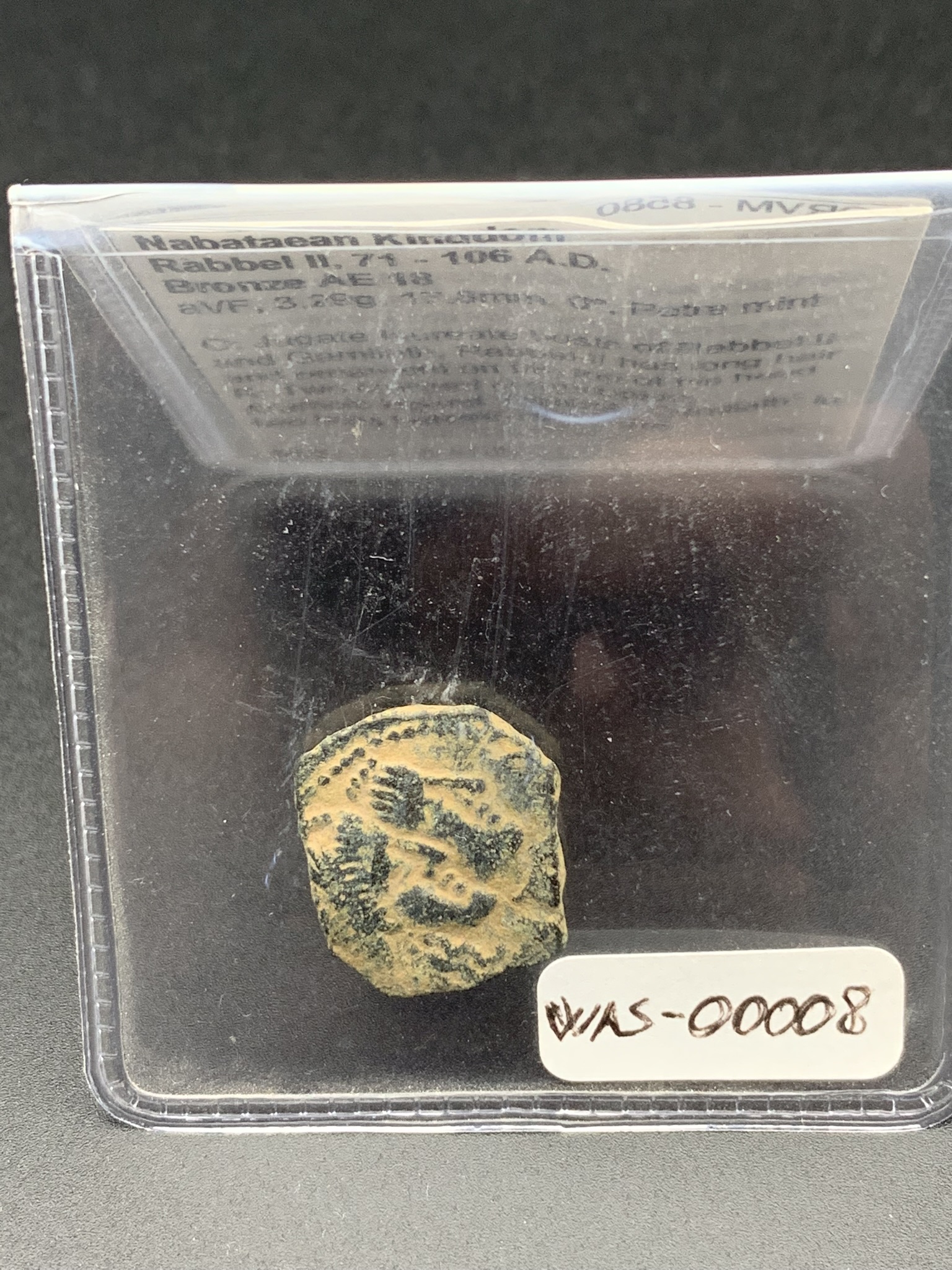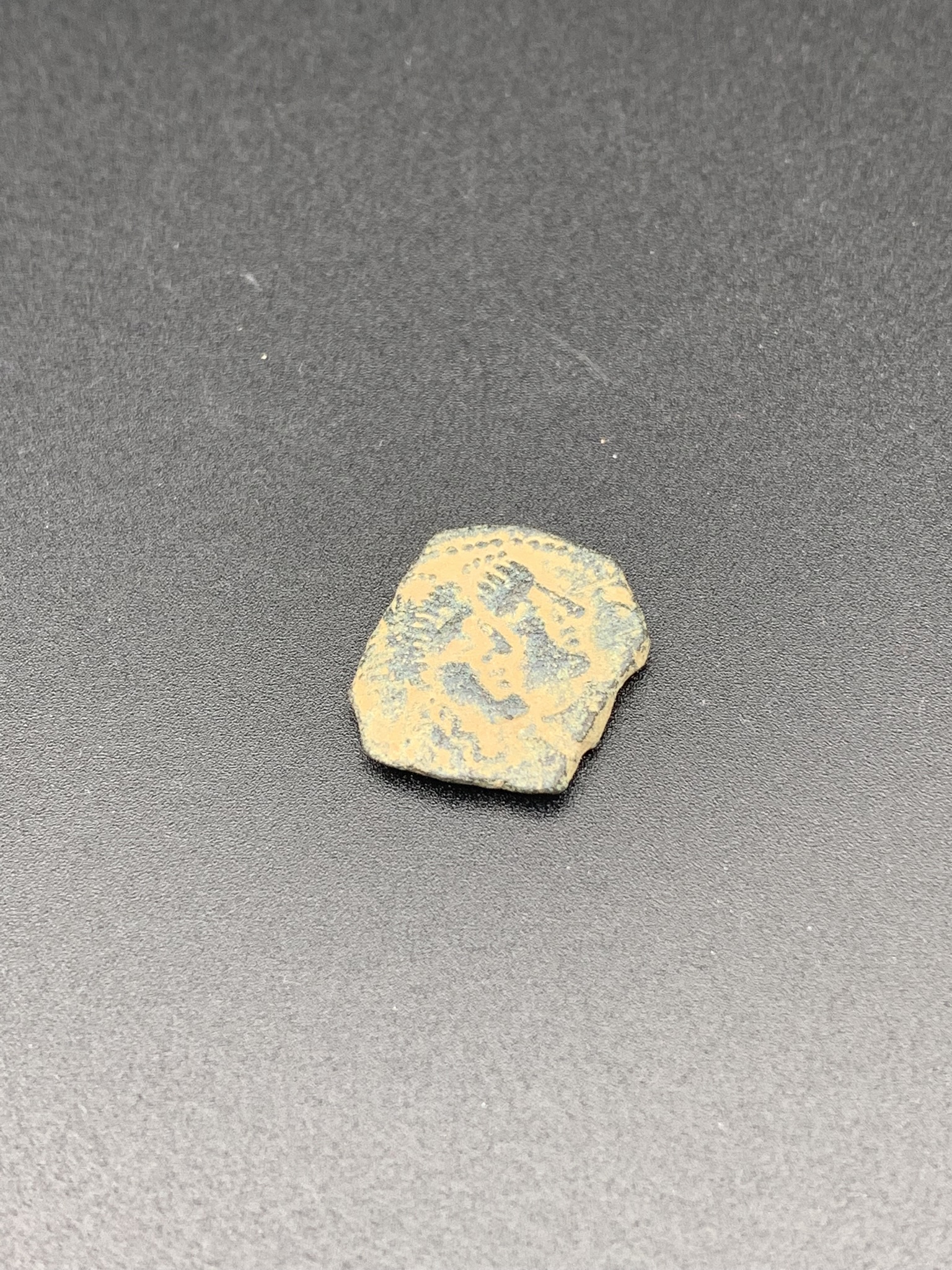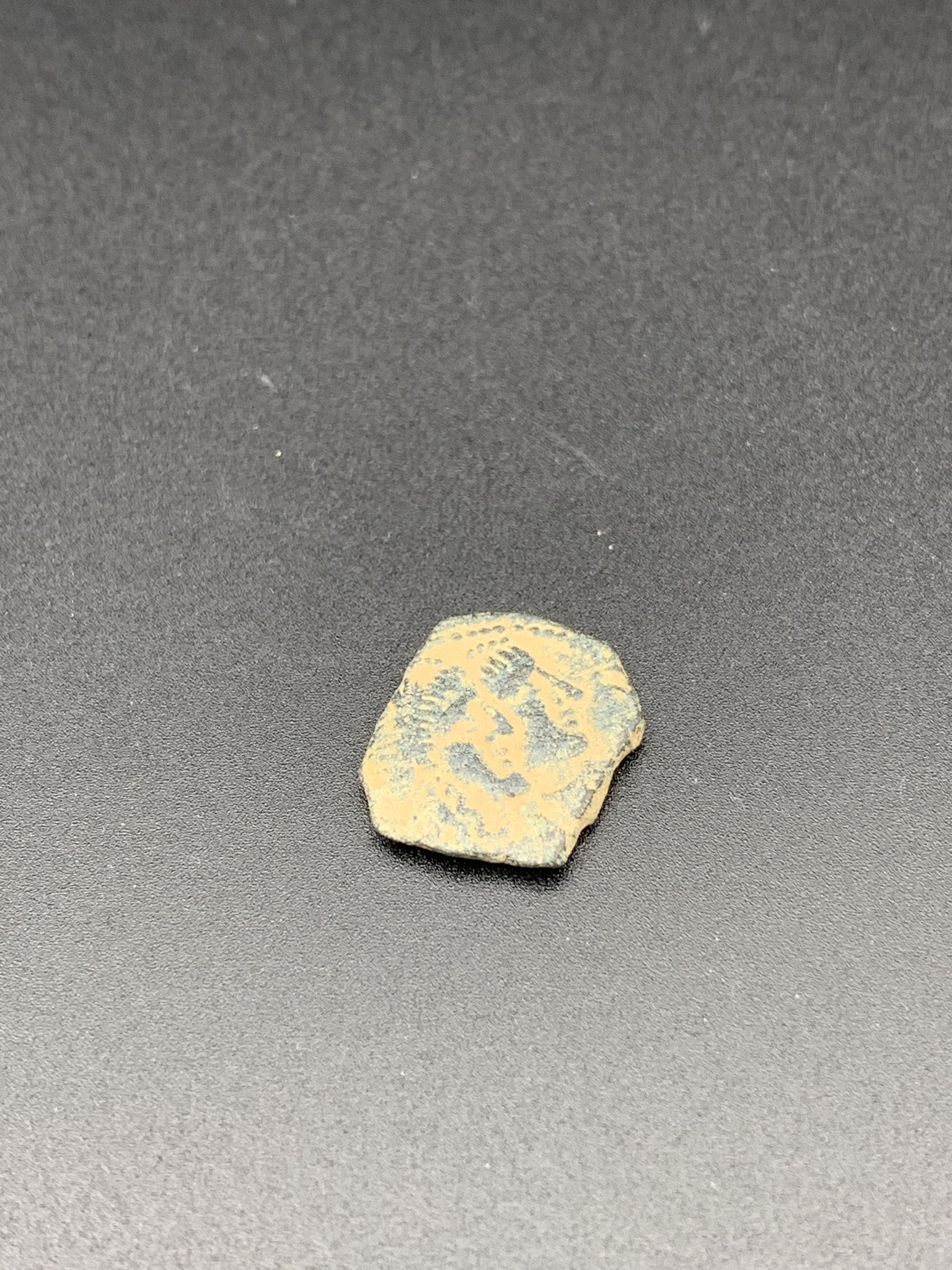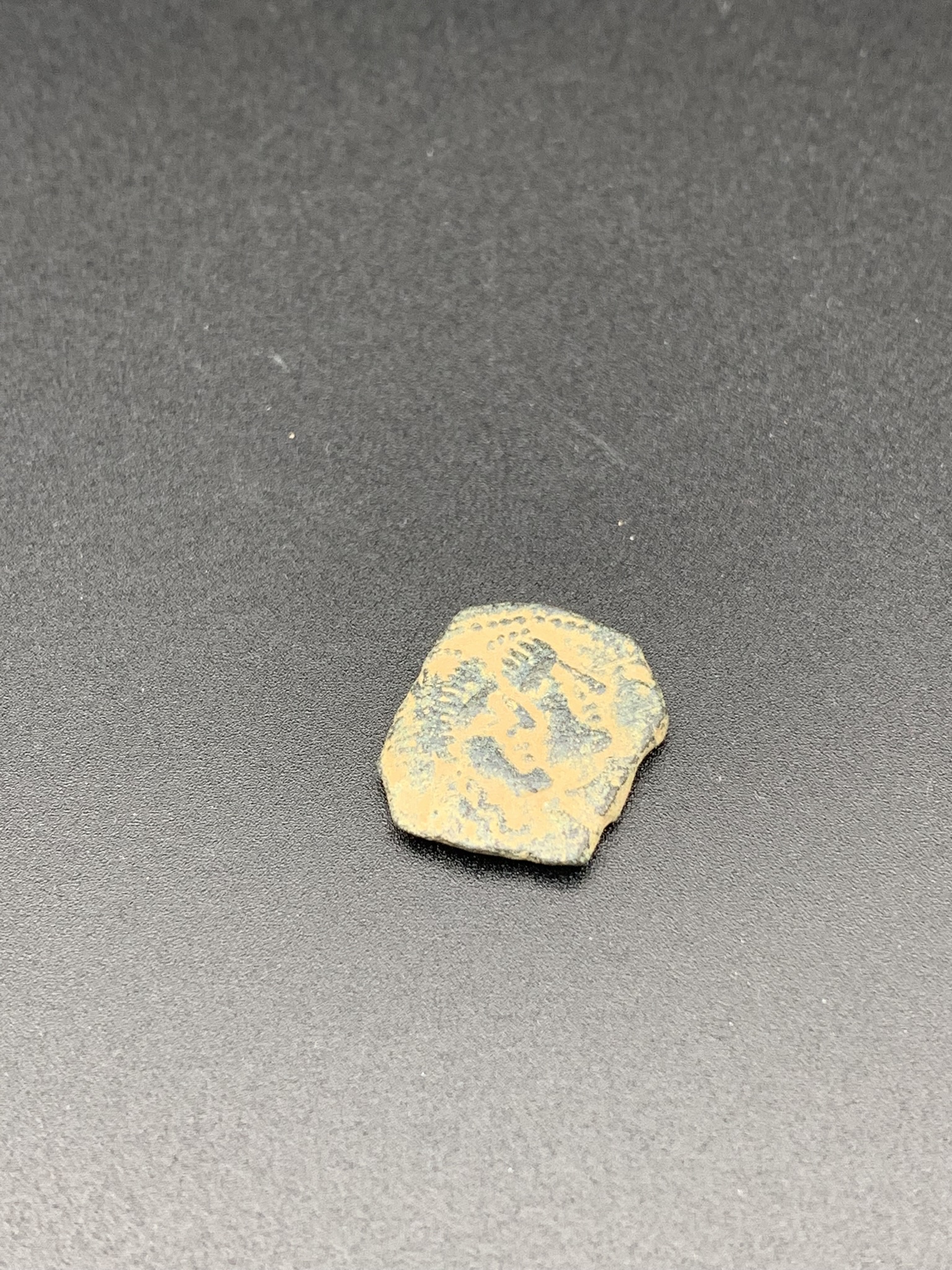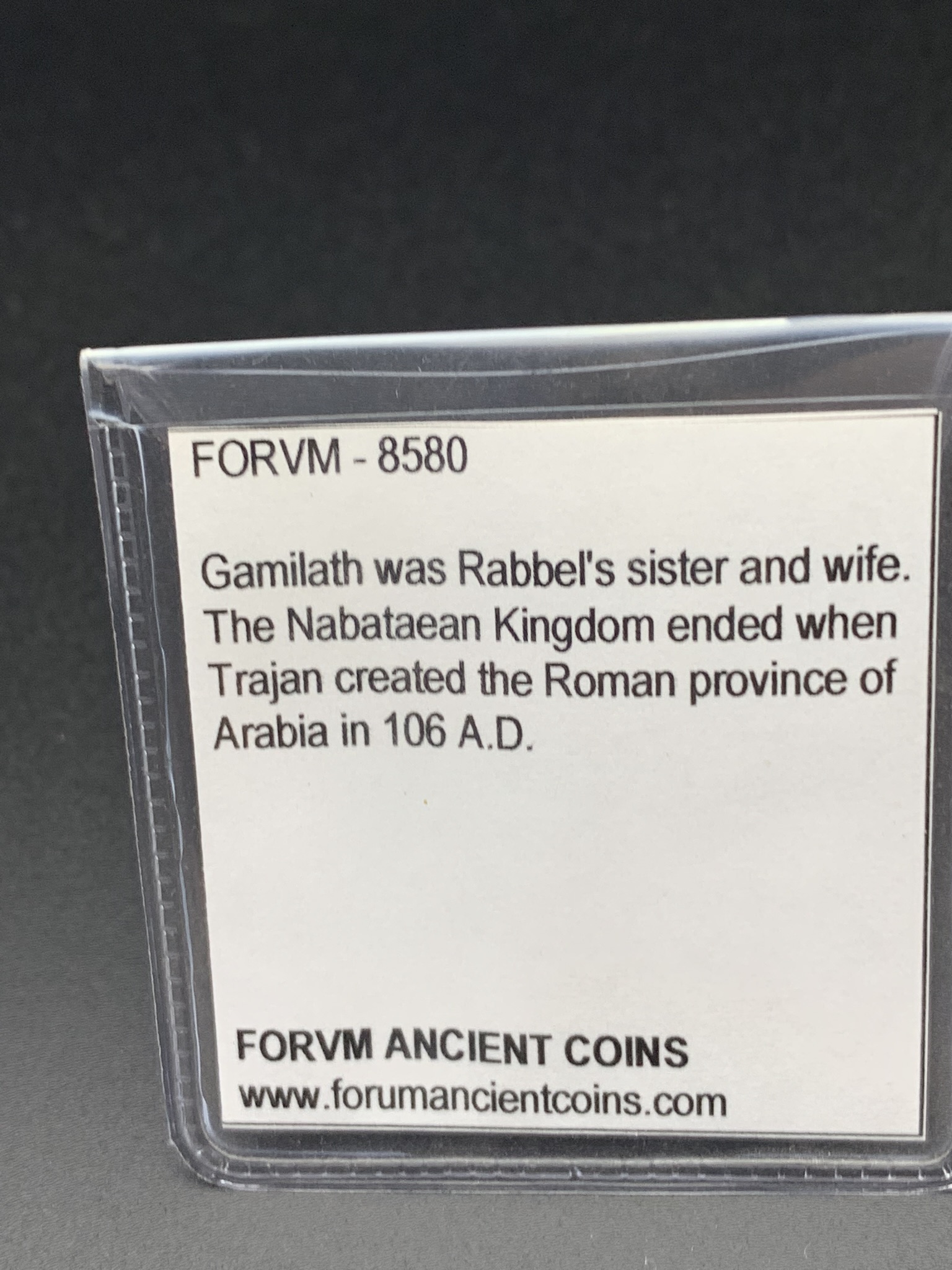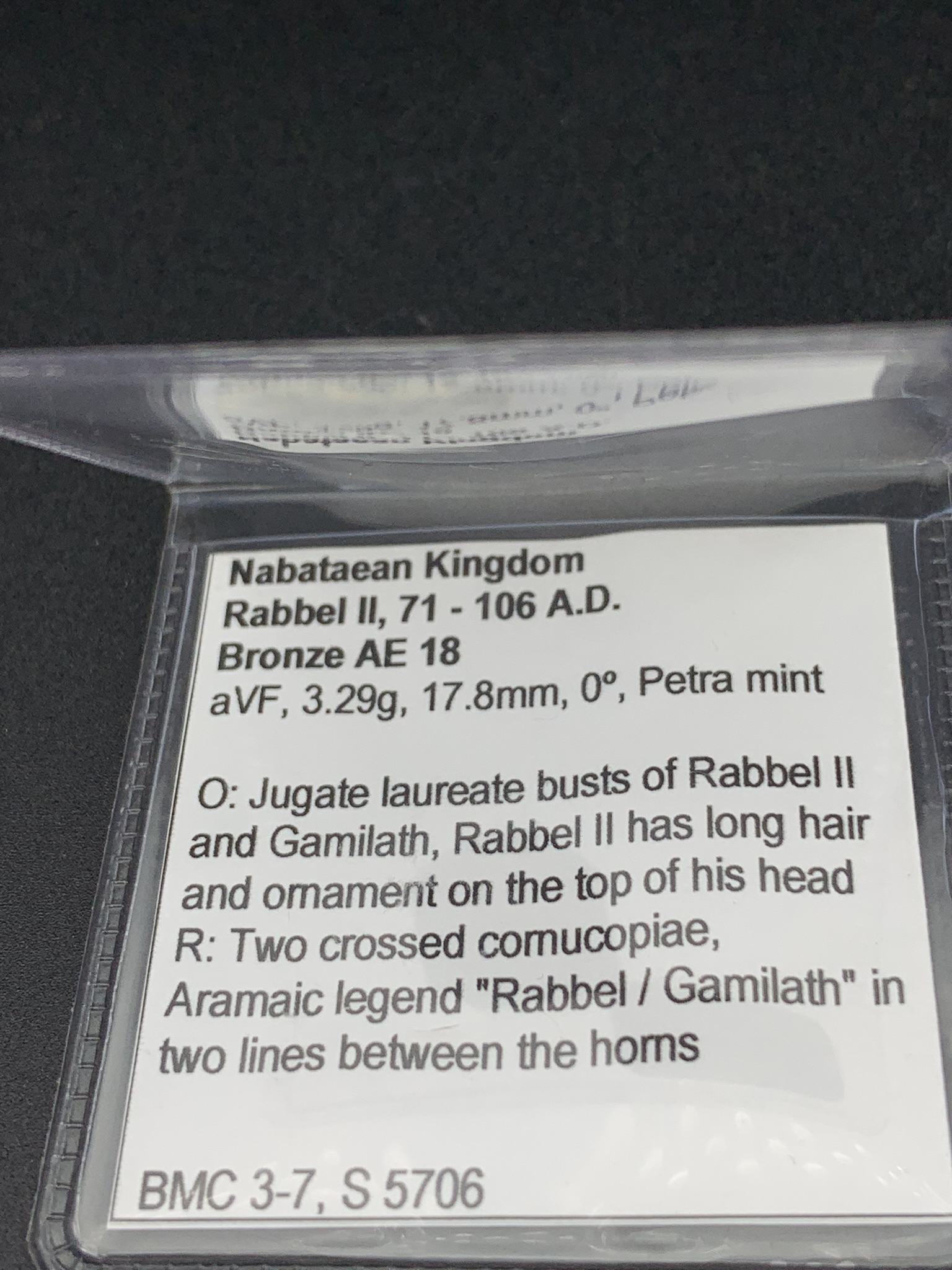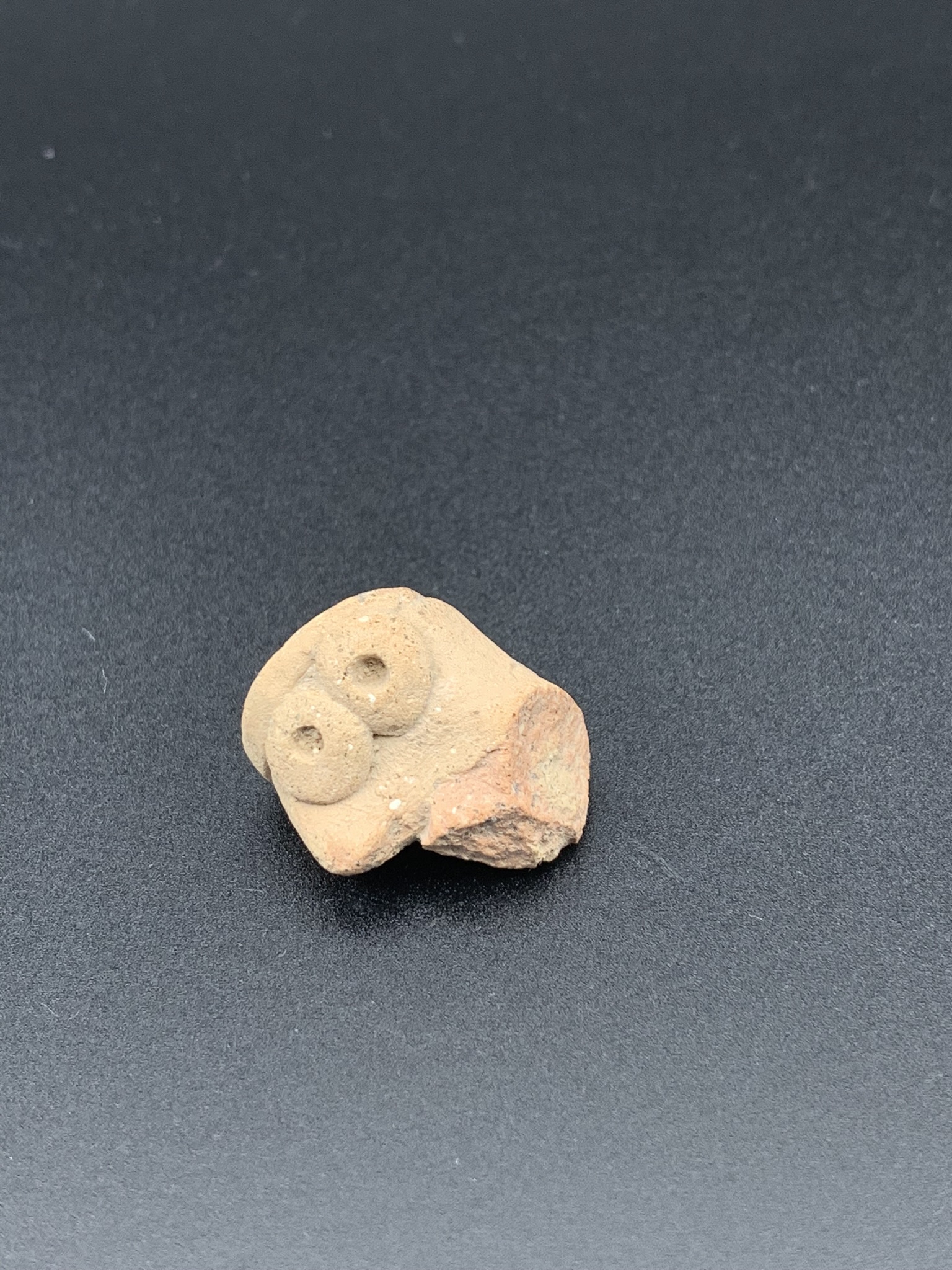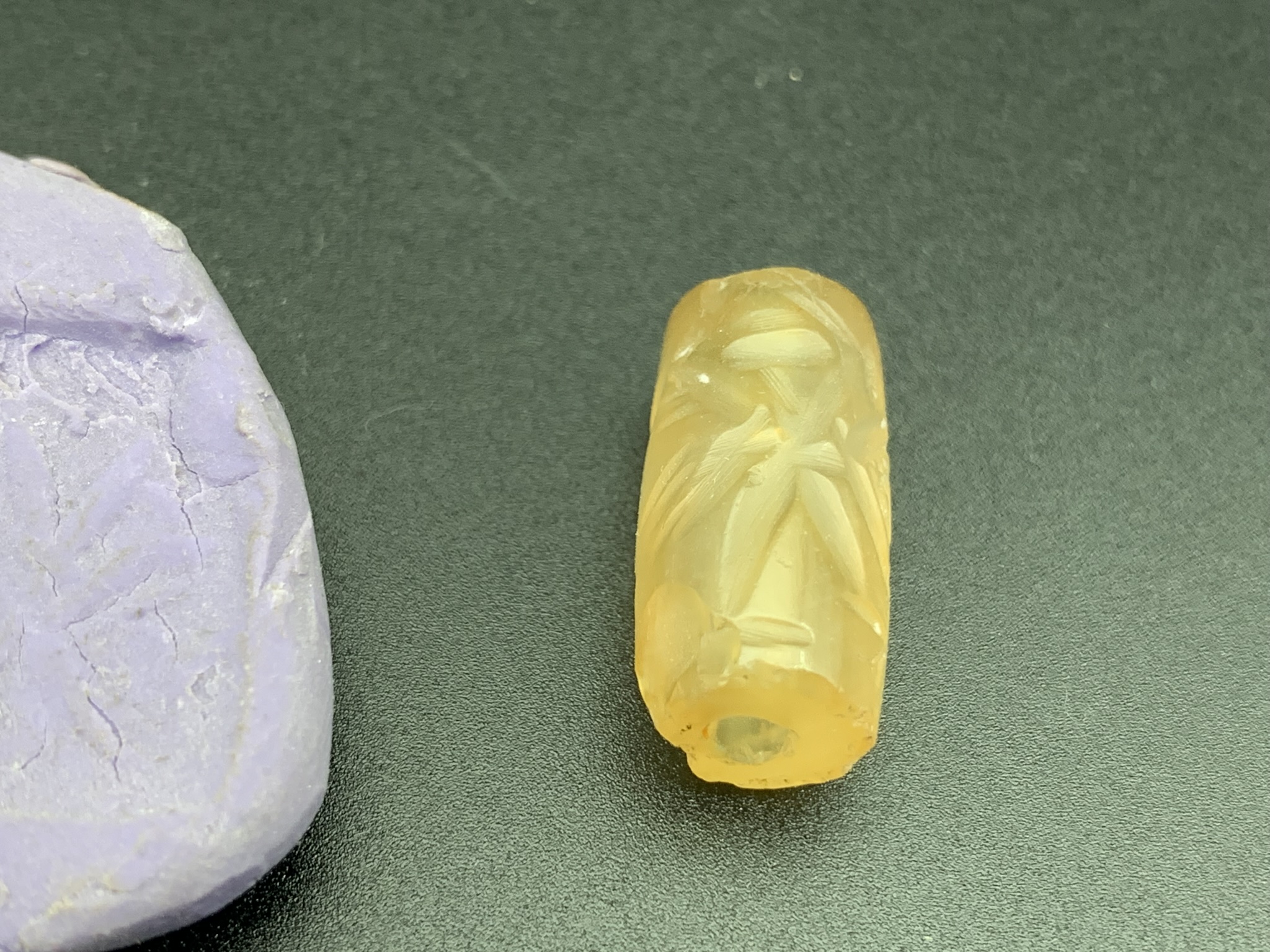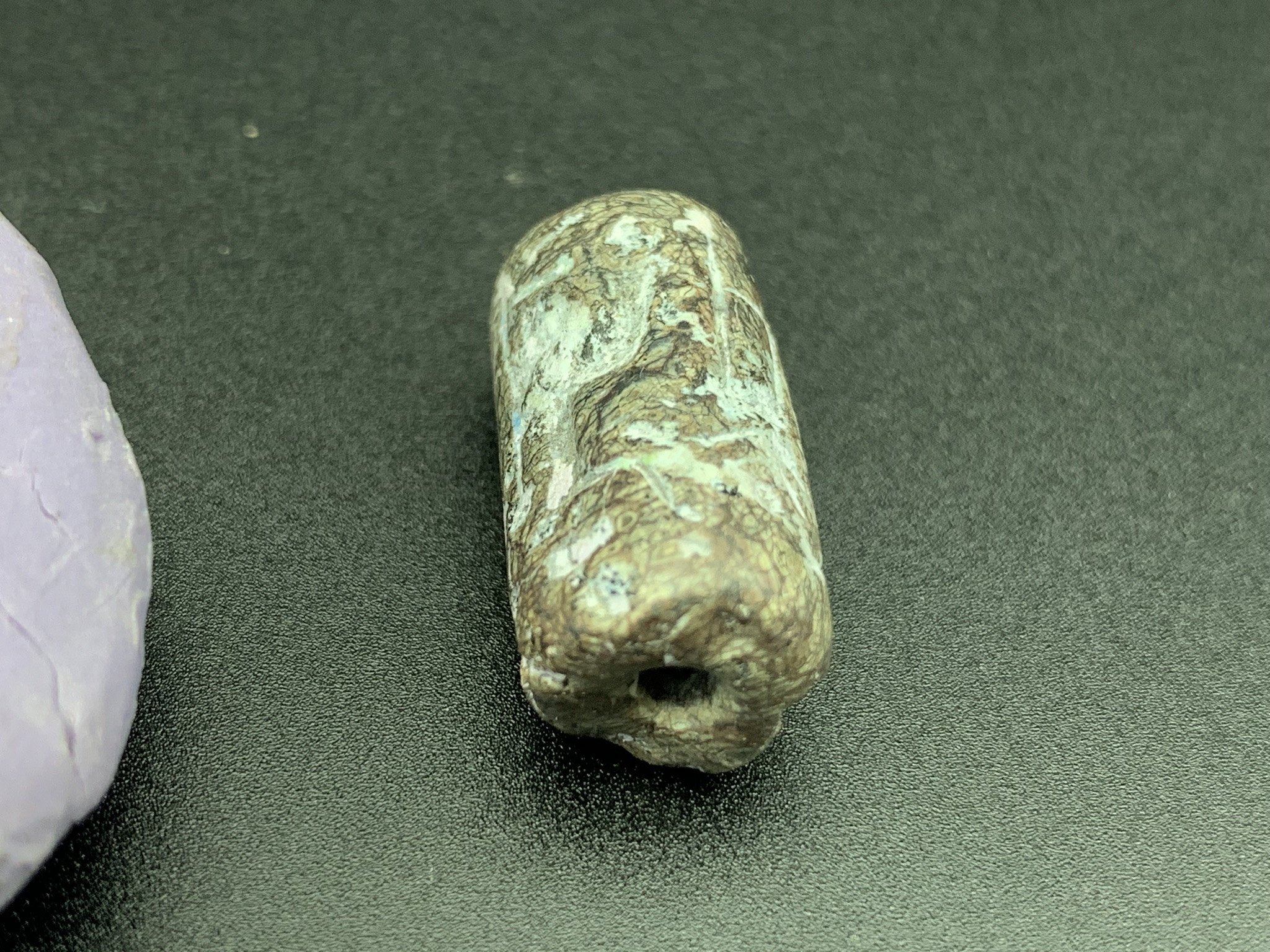Moneda Nabatea, Rabbel II, 71 – 106 d.c.
€12,00
Moneda Nabatea, Rabbel II, 71 – 106 d.c.
- Procedència: Nabatea
- Època: 71 – 106 d.c.
- Tamany: 3.29g, 17.80mm
- Material: Bronze
- Estat: Desgastat
- Comprat a: Forum Ancient Coins
- Venedor: Forum Ancient Coins
- Preu: 12,00$
- Certificat d’autenticitat: No
- Data: 18-gen-2005
Codi: WAS-00008
Moneda Nabatea, Rabbel II, 71 – 106 d.c.
- Procedència: Nabatea
- Època: 71 – 106 d.c.
- Tamany: 3.29g, 17.80mm
- Material: Bronze
- Estat: Desgastat
- Comprat a: Forum Ancient Coins
- Venedor: Forum Ancient Coins
- Preu: 12,00$
- Certificat d’autenticitat: No
- Data: 18-gen-2005
Descripció detallada
8580. Bronze AE 18, BMC 3-7, S 5706, aVF, 3.29g, 17.8mm, 0o, Petra mint, observe judae laureate bust of Rabbel II and Gamilath. Rabbel II has long haur and ornament on the top of tjis head; reverse two crossed cornucopiae, Aramic legend “Rabbel / Gamilath” in two lines between the horns.
Més informació
https://www.ancient.eu/Kingdom_of_Nabatea/
https://nabataea.net/explore/cities_and_sites/petra/
https://www.omniglot.com/writing/nabataean.htm
https://www.metmuseum.org/toah/hd/naba/hd_naba.htm
NABATEAN
The Nabataeans, also Nabateans, were an Arab people who inhabited northern Arabia and the Southern Levant in antiquity. Their settlements, most prominently the assumed capital city of Raqmu (present-day Petra, Jordan),[1] gave the name of Nabatene to the borderland between Arabia and Syria, from the Euphrates to the Red Sea. Their loosely controlled trading network had no securely defined boundaries in the surrounding desert; it focused primarily on strings of oases under their control, where agriculture was intensively practiced in limited areas, and on the routes that linked them together. They maintained territorial independence from their emergence in the 4th century BC until Nabataea was conquered by Trajan in 106 AD, annexing it to the Roman Empire. Nabataeans’ individual culture, easily identified by their characteristic finely potted painted ceramics, was adopted into the larger Greco-Roman culture. They were later converted to Christianity during the Byzantine Era. Jane Taylor, a writer, describes them as “one of the most gifted peoples of the ancient world”.
Rabbel II
Rabel II Soter (ar-Rabil) was the last ruler of the Nabataean Kingdom, ruling from 70 to 106.
After the death of his father, Malichus II, ar-Rabil still a child, ascended to the throne. His mother, Shaqilath II, assumed control of the government in the early years. His sister Gamilath became queen of the Nabataeans. Ar-Rabil gave himself the Greek title “Soter”, meaning “Savior”, or “the one who has given life and deliverance to his people”.
After his death in 106, the Roman emperor Trajan faced practically no resistance and conquered the kingdom on 22 March 106. It became the Roman province of Arabia Petraea, with Bosra becoming its provincial capital.


